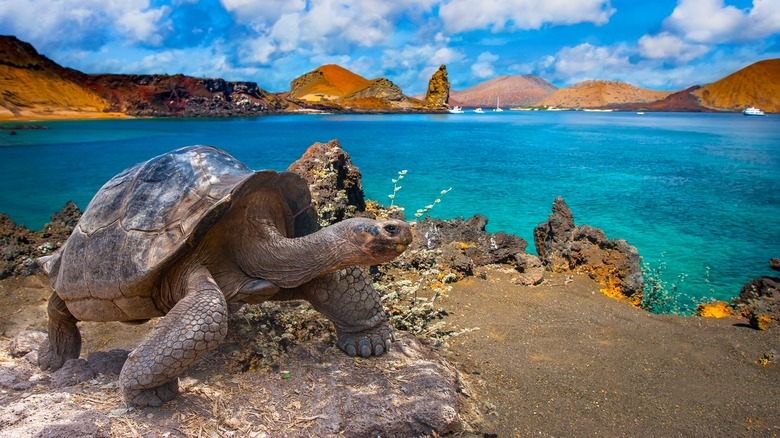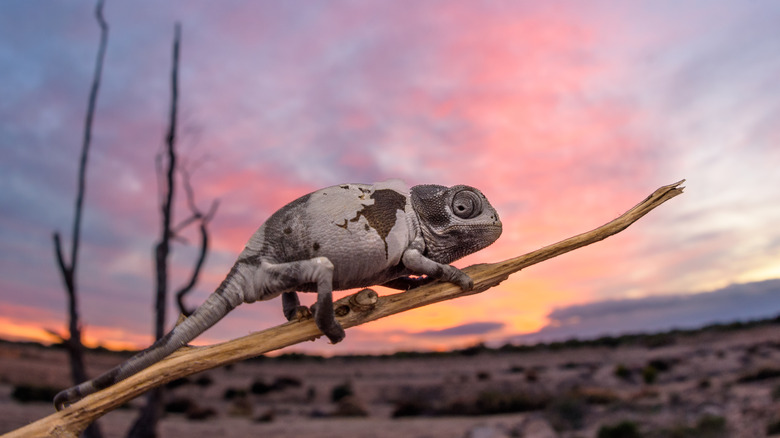Why Reptiles Might Face Extinction Due To Climate Change
Earth is billions of years old — around 4.54 billion, according to National Geographic. This means that what humans know about the planet's long and eventful history is more than likely extremely limited. However, through the use of science, technology, and a lot of brilliant and driven minds, there are some key points in Earth's past that we're well aware of. A few of these may seem more important to understand than others, like, for example, the five mass extinction events.
These events date as far back as 440 million years ago and as recently as 65 million years ago. According to the American Museum of Natural History, a mass extinction takes place when at least half of all species on Earth dies out within a short time period. The largest mass extinction event recorded is the Permian-Triassic Extinction, which was the outcome of a climate crisis that took place 250 million years ago. This particular mass extinction wiped out around 86% of life on Earth, according to a study published in Science Advances.
Interestingly enough, reptiles were among the few that lived through the effects of climate change and mass extinction time and time again, and have even had the time to flourish for millions of years. Unfortunately for them, though, the most recent effects of climate change might cause their future to look bleak this time around.
Reptiles have survived climate change in the past when many others didn't
A team of researchers worked to better understand how reptiles have spent millions of years surviving multiple climate crises and mass extinction events, and found that reptiles were spread among a variety of different landscapes, which led them to adapt to different conditions. The study published in Science Advances explores the possibility that reptiles were already evolving prior to the catastrophic events of mass extinction. Their diverse homes and changing bodies gave them the head start they needed to survive when so many other species did not.
Smaller reptiles had an advantage over larger reptiles regarding rising temperatures as they can regulate their body temperatures much easier than their larger counterparts (per Mashable). Over the years, the smaller reptiles known as lepidosaurs had less to worry about regarding climate change as their bodies were already adapted to warmer climates and temperatures. Making homes in and adapting to diverse areas helped reptiles prepare for the effects of climate change in the past, but currently, climate change seems to be moving at a much faster pace, and reptiles might not have the time to prepare as they did in the past.
The Earth's temperatures are rising faster than reptiles can prepare
Climate change is moving alarmingly fast, and through human impact like carbon emissions, Earth is well on the way to temperatures warm enough to match what they were three million years ago, according to PNAS. Temperatures that took millions of years to reach in the past are now creeping up at a much faster rate, and not every animal will have the time or ability to adapt to the change.
Over 900 scientists weighed in on how reptiles will handle the rapid rise in temperature and found that of over 10,000 reptile species, a whopping 21.1 percent face extinction, according to a study published in Nature. This means that while reptiles may have escaped the brunt of climate change before, there's a high chance they won't get off so easily going forward. Unless humans make a significant effort to decrease carbon emissions and slow down the effects of global warming, it's not likely reptiles, or any other species for that matter, will be able to survive the rapid changes.


